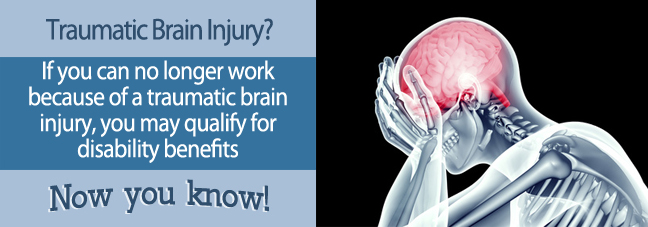If you have had a traumatic brain injury (TBI) it could have radically altered your life, leaving you with the inability to resume work and earn a livable income. Your brain injury may be severe enough for you to be eligible for a social security disability benefit, which is administered by the federal Social Security Administration (SSA). It is important to understand how the social security disability benefit application process works and not to be put off if your application is rejected initially.
If your initial application fails, there are four successive steps available to you that may result in a reversal of the decision. These steps in order of sequence are:
- request for reconsideration;
- administrative hearing before an administrative law judge(ALJ);
- appeals council review;
- appeal to a federal district court to have an appeal decision overturned.
The Initial Application for a Disability Benefit for Traumatic Brain Injury
The success or failure of your initial application depends heavily on how well your application has been backed up by evidence of your disability. A well prepared application can help to avoid having to appeal a denied benefit.
The SSA will assess your eligibility primarily by comparing your symptoms and severity of injury against the listing in the Blue Book. You have a much better chance of obtaining a benefit if your condition meets the criteria in the Blue Book.
Normally, a TBI claim will not be considered until 3 months at least has elapsed so that an assessment can be made of the effects the brain injury has had on normal functioning and the ability to work.
Medical records, including tests and scans, showing how the injury happened and the clinical effects on the brain’s functioning will need to be provided. In some circumstances, the SSA may delay a decision for up to 6 months since the injury.
In addition to examining x-rays, EEGs, CT scans and MRIs, the disability determination services may carry out an examination of their own and interview you and anyone else who can shed light on your condition.
If the criteria do not meet the Blue Book listing exactly, it is possible that a residual functional capacity (RFC) assessment made by your doctor may help increase your chances of an initial benefit approval. A RFC assessment involves a series of physical and mental tests that helps to show what sort of work or activity you can and cannot do.

The Appeals Process For a Traumatic Brain Injury
If you have been denied after your initial application, there is still a chance you may be approved. There are four subsequent stages of an appeal against a denied benefit claim. The chances of a reversal of a denied claim are higher as you proceed through these stages. Your chances of obtaining a benefit at this stage are also further improved by using a disability lawyer to help you with an appeal.
Firstly, after a benefit application rejection, you can request a reconsideration of your application. The SSA will go over the whole application including a reassessment of the evidence you supplied.
Secondly, ask for your case to go to an administrative hearing. An administrative law judge will attend the hearing. You can bring your lawyer to help you answer the judge’s questions. You should bring with you or supply in advance any further evidence you have which could support your claim.
If the ALJ’s decision is also negative, there are two further steps which you could take. The third step is to take your case to the appeals council for a review of the decision to reject your claim. The final stage is an appeal to the federal district court.
Getting Help With the Application Process for SSD With a TBI
An attorney may be able to help guide you through the disability application process with a TBI. To get connected with an independent, participating attorney who subscribes to the website, fill out a Free Case Evaluation on this page today!